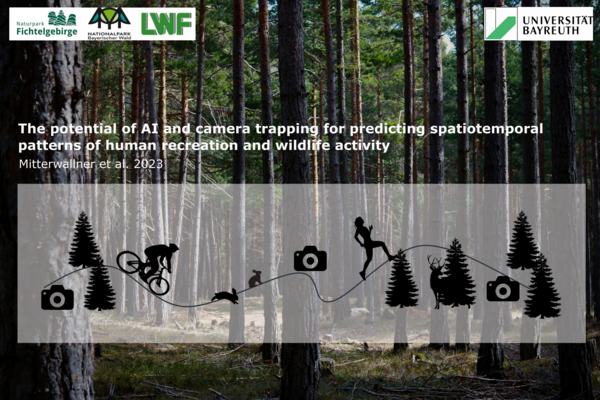canceled
The potential of AI and camera trapping for predicting spatiotemporal patterns of humans and wildlife
2 Nationalpark Bayerischer Wald
3 Bayerische Landesanstalt für Wald und Forstwirtschaft
P 5.2 in Linking disciplines: Beyond the ivory tower
Since human activities in natural areas are increasing in frequencies and spatial distribution, understanding how these activities interact with wildlife is crucial to conserve ecosystem integrity. Big data approaches, like large-scale camera trapping studies, are becoming more relevant for studying these interactions. In addition, open-source object detection models are rapidly improving and have the potential to enhance the image processing of camera trap data recording human and wildlife activities. This large-scale and long-term database further enables to model and predict spatiotemporal patterns of human activities in natural areas. Hence, we evaluate the performance of an open-source object detection model in a cross-regional visitor and wildlife monitoring using camera traps. Since the accuracy of the detection model was very high with 96.0% accuracy for animals, 93.8% for persons and 99.3% for vehicles and since the detection model can be readily used to count objects on images, we further demonstrate that this approach is suitable for ecological analysis of spatiotemporal patterns of humans and wildlife. Besides the great acceleration in processing speed, the model is also suitable for long-term monitoring and allows reproducibility in scientific studies while complying with privacy regulations. Therefore, we used the data of a long-term visitor monitoring with camera traps and visitor counters and multiple spatiotemporal predictors to model and predict visitor flows along a trail network in space and time. The most parsimonious model was able to identify spatial and temporal hotspots of human recreational activities and predict numbers of visitors in space and time. With this, the assessment of human-nature interactions in natural systems is substantially enhanced and enables the adaptation of management measures to reduce social and ecological conflicts.
Keywords: human-nature interactions, camera traps, artificial intelligence, spatio-temporal modelling



